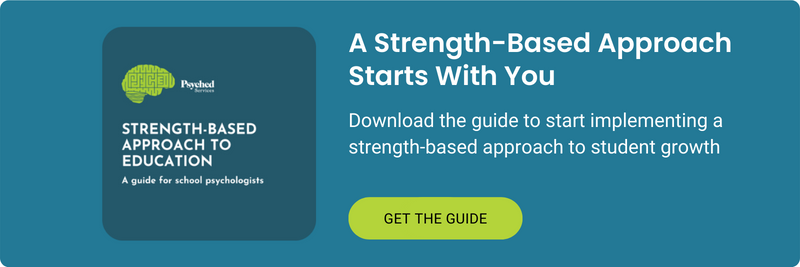
By Maria Gregory and Marysa Enis
March 2019
Disproportionality Then and Now
What does disproportionality mean to you? Likely it depends on who you are … and where you are … and what you are. To school psychologists, it means that African American boys are far more likely to be referred for a special education evaluation than any other group of children. And when they are referred, it means that school psychologists are far more likely to decide that these children do, in fact, have a disability. It means that we are a part of the problem.
In 1971, when this problem was still in its infancy, a group of San Francisco parents tried to tackle it head on. IQ tests had gained traction as a way to determine who would or would not be successful in a given role. Tests were being used for everything from employment to forced sterilization. In the case of Larry P. v. Riles, tests were being used to remove African American students from regular classes on the basis that the children were “educable mentally retarded.” Families pointed out that the tests were flawed due to bias, and the judge (quite appropriately) agreed.
Since the 1979 ruling, IQ tests have been banned, then banned some more, then partially unbanned (yet still banned) for African American students being assessed for special education in California. However, despite the very clear purpose of the initial ruling, which was to protect children from being sent to “dead-end … stigmatizing … isolating … [and] inferior” classes, children of color are still labeled and removed from regular classrooms at an inexcusably high rate. This is equally true in California as it is in all other states, though California is the only one with a moratorium on IQ tests.
The debate about IQ tests is a huge topic which we will explore in our next article, but it isn’t the biggest elephant in the room. As others have pointed out, the more significant issue is: Why, 40 years after Larry P. v. Riles, are we still discriminating against kids of color in schools? Not just African American students, but all students of cultural and linguistic diversity, and not just in California, but in all states? San Francisco’s KALW did a nice piece called A legacy of mistreatment for San Francisco’s black special ed students. It illustrates that although the methods have changed since 1971, the results have not.
What do dead-end, isolating, stigmatizing, and inferior classes look like in 2019?
- In School Suspension (ISS)
- Alternative Education Placement centers (AEP)
- Some special education classes (particularly those for children with emotional disorders)
- Juvenile detention
What Schools Should Do
- Go to the Civil Rights Data Collection website and search for your school. Find out how each race and ethnicity is represented in:
- Overall student enrollment
- Special education
- 504
- Gifted and Talented
- Advanced Placement classes
- Chronic absenteeism
- Discipline (suspension and expulsion)
- Restraint or seclusion
- Bullying
- Retention
- Identify disproportionate areas and address them. Use these resources to help:
- CDE Guidance on Disproportionality
- National Center for Culturally Responsive Educational Systems
- National Center on Safe Supportive Learning Environments
- Ensure quality school-wide practices, like:
- Rigorous curriculum
- Procedures for identifying students who are gifted
- Quality programing for Gifted and Talented
- Meaningful professional development for teachers
- Positive behavioral intervention supports
- Referrals for wrap-around support, like community outreach and mental health counseling
- Collect, use, and report disaggregated discipline data to ensure that these steps are working.
What Educators Should Do
1. Learn as much as possible about the psychosocial and cultural norms specific to children in your school, including:
- Language
- Literature
- Holidays and festivals
- Family roles
- Beliefs, assumptions, and core values
- Manners and body language
- Rules of conduct and concept of justice
- Humor
- Child rearing practices
- Personal space
- Relation to authority
2. Get to know your personal biases and have a plan to avoid acting on them.
- Read 20 Judgments a Teacher Makes in 1 Minute and 28 Seconds
- Go to the Project Implicit website and take the tests.
- Find out which students and situations are most likely to elicit your personal bias.
- Avoid responding right away when a student triggers your bias. Instead, say something like, “I’ll talk to you after lunch,” or “Let me think about that first.” Take care of your personal needs and think it over before following up.
3. Consider exclusionary factors before referring a student for special education assessment. A child must not be identified with a disability if delays are the result of:
- A lack of instruction in math or reading
- Limited English proficiency
- Inappropriate instruction
- Poor school attendance
- Environmental, cultural, or economic disadvantage
SELPAs, special education directors, and school psychologists, read Larry P. v. Riles, Part Two: Assessment, where we take an in-depth look at current testing practices and the issues that surround them.
Is your school ready to make a change? Our seasoned school psychologists and BCBA’s would love to help! It’s crucial to collect the right data and know what to do with it. Click here to schedule a free consultation about what Psyched Services can do for you.





